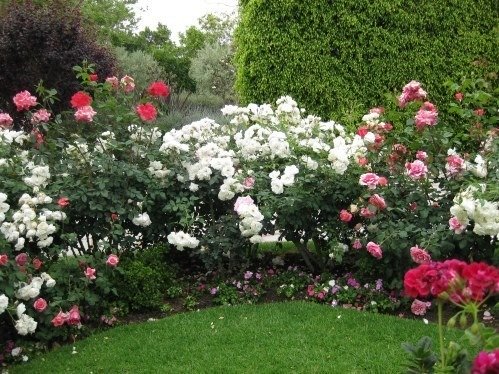Summer Rose Care
Over the past month, one of the most searched for items on our website was “rose care”. While we’ve covered caring for cut roses and even what the colors of roses mean (inspired by The Bachelor), we’ve never specifically covered caring for roses during the summer months. There’s some pretty important things you should consider like not fertilizing after July.
Watering
Roses will require watering during hot, dry weather. The actual amount and frequency depends upon weather conditions and soil type. In most garden situations, a deep soaking about every two weeks should be sufficient. The soil should be soaked to a depth of 10 to 12 inches. Apply the water directly to the soil. Over-head watering wets the foliage and may increase disease problems. If overhead watering is unavoidable, the best time to water is during the morning. This allows the foliage to dry quickly.
A mulch around the roses will help to conserve soil moisture and also help to control weeds. Possible mulches include wood chips, shredded bark, and pine needles. Spread 2 to 4 inches of mulch around the base of each plant or over the entire bed.
Fertilizing
To encourage healthy, vigorous growth and abundant bloom, roses should be fertilized three times a year. The first application should be in early spring immediately after pruning. The second application should be made during the first bloom period. The third application should be made in mid to late July. Do not fertilize after July 31. Later fertilization may produce succulent new growth which may not harden sufficiently before winter. A general purpose fertilizer, such as 5-10-5 or 10-10-10, should produce excellent results. Thoroughly water the roses after fertilization.
Deadheading
It is necessary to remove spent flowers to conserve the plant's energy and encourage repeat blooms. The procedure for deadheading roses during the first growing season differs from established roses. On a recently planted rose, it is usually recommended that the faded flower be removed above the uppermost 3-leaflet leaf. Removal of a large amount of foliage reduces the food manufacturing capacity and may weaken the young plant. When deadheading established roses, the stem may be cut back to a 5-leaflet leaf. Retain at least two 5-leaflet leaves on each shoot. Use sharp tools (hand shears or knife) to remove faded flowers. Cut about 1/4 inch above an outward facing bud and leaflet with the cut made parallel to the angle of the leaflet.
Controlling Insects and Diseases
Continue a rigorous spray program through the summer months to control insect and disease pests. Combination sprays, which include an insecticide and one or more fungicides, are available in garden centers and nurseries. Disease problems are most severe during periods of rainy weather. The key to disease control is prevention. Begin applying fungicides before symptoms appear and reapply as directed on the label. Spray both the upper and lower leaf surfaces to prevent disease infection.
While roses require more care and maintenance than many annuals and perennials, the results can be strikingly beautiful. With these tips you can give your roses the care they need to flourish even in the heat of the summer.


